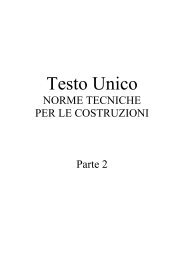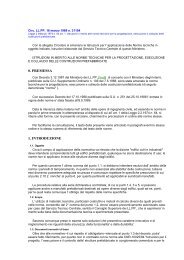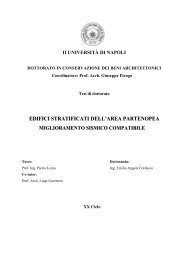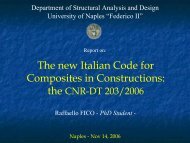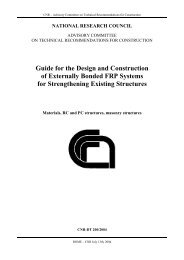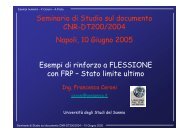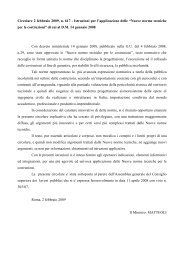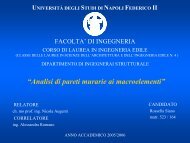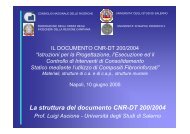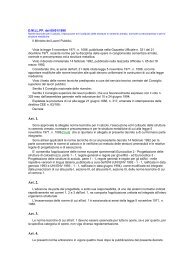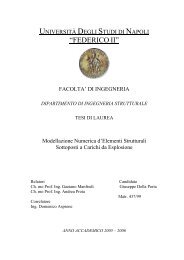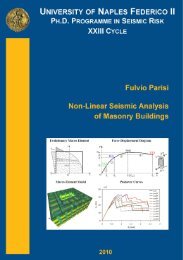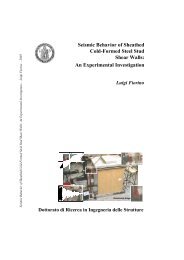CNR-200/2004 Rinforzo a flessione di strutture in c.a. e c.a.p.
CNR-200/2004 Rinforzo a flessione di strutture in c.a. e c.a.p.
CNR-200/2004 Rinforzo a flessione di strutture in c.a. e c.a.p.
- No tags were found...
You also want an ePaper? Increase the reach of your titles
YUMPU automatically turns print PDFs into web optimized ePapers that Google loves.
(3) Nel caso <strong>di</strong> r<strong>in</strong>forzo ad U o <strong>di</strong> r<strong>in</strong>forzo <strong>in</strong> avvolgimento su una sezionerettangolare, il contributo del r<strong>in</strong>forzo <strong>in</strong> FRP,V Rd,f , è basato sul meccanismoa traliccio <strong>di</strong> Moersch e risulta:1 cotθ+ cotβV = ⋅0.9d⋅ f ⋅2t⋅ ⋅Rd,f fed fγ s<strong>in</strong>( θ+β)Rdwfpf(4) Nel caso <strong>di</strong> r<strong>in</strong>forzo <strong>in</strong> avvolgimento con fibre ortogonali all’assedell’elemento da r<strong>in</strong>forzare (β=90°), avente sezione circolare <strong>di</strong> <strong>di</strong>ametro D,il contributo del r<strong>in</strong>forzo <strong>in</strong> FRP risulta essere <strong>in</strong>vece:1 πV = ⋅D⋅ f ⋅ ⋅t⋅cotθγ 2Rd,f fed fRd(5) Nelle espressioni è possibile <strong>in</strong>trodurre il passo pfdelle strisce _ misurato lungol’asse dell’elemento, al posto <strong>di</strong> p f , tenendo presente che p f = ⋅senβ_resistenza <strong>di</strong> progettop f



